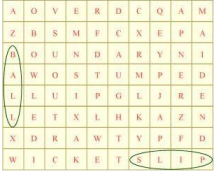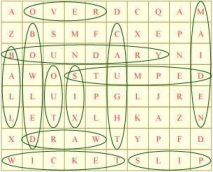Class 7 English Honeycomb Chapter 10 Questions and Answers - Free PDF Download
FAQs on NCERT Solutions For Class 7 English Honeycomb Chapter 10 The Story Of Cricket - 2025-26
1. What are the two main peculiarities of cricket as mentioned in the NCERT Class 7 English Chapter 10, 'The Story of Cricket'?
According to the chapter, cricket has curious characteristics that make it unique among modern team sports. The two main peculiarities are:
- A Test match can be played for five full days and still end in a draw, which is a duration unheard of in other sports.
- The length of the cricket pitch is strictly defined at 22 yards, but there are no official rules specifying the size or shape of the cricket ground itself.
2. How should one correctly answer the NCERT question about the evolution of cricket equipment based on 'The Story of Cricket'?
To correctly answer this question as per the CBSE pattern, focus on the chronological changes described in the chapter. Your answer should mention that cricket's equipment has evolved with the game's rules and safety needs. Key points to include are:
- The bat was initially shaped like a hockey stick but evolved into the straight-bladed bat we see today.
- Protective gear like pads and gloves were introduced in response to bodyline bowling, making batting safer.
- The ball was handmade and its materials were not specified until later.
- Modern equipment, including helmets made from lightweight synthetic materials, is a recent development driven by technology.
3. What key points should be included when solving the NCERT exercise on the role of technology in modern cricket?
When solving this NCERT question, your answer should focus on how technology has changed the game both on and off the field. The main points from Chapter 10 are:
- Manufacturing: Technology allows for the mass production of standardised equipment like bats, balls, and protective gear.
- Safety: Modern technology has led to the creation of advanced safety equipment like lightweight helmets and durable pads.
- Broadcasting: Satellite television has made cricket a global sport, allowing millions to watch matches live from home, which in turn has commercialised the game.
4. Why does the chapter explain that the spread of cricket was linked to the British Empire?
The chapter explains this link to show how sport and history are connected. Cricket was an English game, and as the British built their empire, they took the game with them to colonies like India, Australia, and the West Indies. Initially, it was a sport for the colonisers. However, the colonised people learned the game and eventually became better at it than the English, using cricket as a tool for national pride and competition on an equal footing.
5. How does 'The Story of Cricket' explain the contrast between the first written Laws of Cricket in 1744 and the modern game?
The chapter highlights a significant contrast to show the game's evolution. The first Laws of Cricket from 1744 were very basic. For instance, they allowed the bowler to choose where to pitch the ball, and umpires were chosen from among the gentlemen present. The modern game, by contrast, is governed by a complex set of rules managed by the Marylebone Cricket Club (MCC), with precise regulations for everything from ball weight to decision review systems (DRS), reflecting how informal leisure became a professional, global sport.
6. Why does the chapter describe cricket as a pre-industrial sport that has survived in the modern era?
This description is used to explain cricket's unique rhythm and values. Unlike modern sports that fit neatly into a television schedule, cricket's origins are in a slower, rural, pre-industrial England. Its long duration (like a five-day Test) and connection to natural elements (like weather affecting play) are remnants of this past. It has survived by adapting, for example, through one-day matches, but its core identity remains rooted in a time before the standardised, clock-bound world of modern industry.
7. When answering NCERT questions, what is the main difference between 'amateur' and 'professional' cricketers as described in the chapter?
The chapter draws a clear distinction based on social class and payment, which is crucial for understanding cricket's history. The key differences to mention are:
- Amateurs: Called 'Gentlemen', these were wealthy individuals who played for leisure and were considered the social elite. They often held positions of power, like team captain.
- Professionals: Called 'Players', these were poorer individuals who played the game for a living. They were paid for their skills and handled the labour-intensive tasks like bowling and fielding.


















